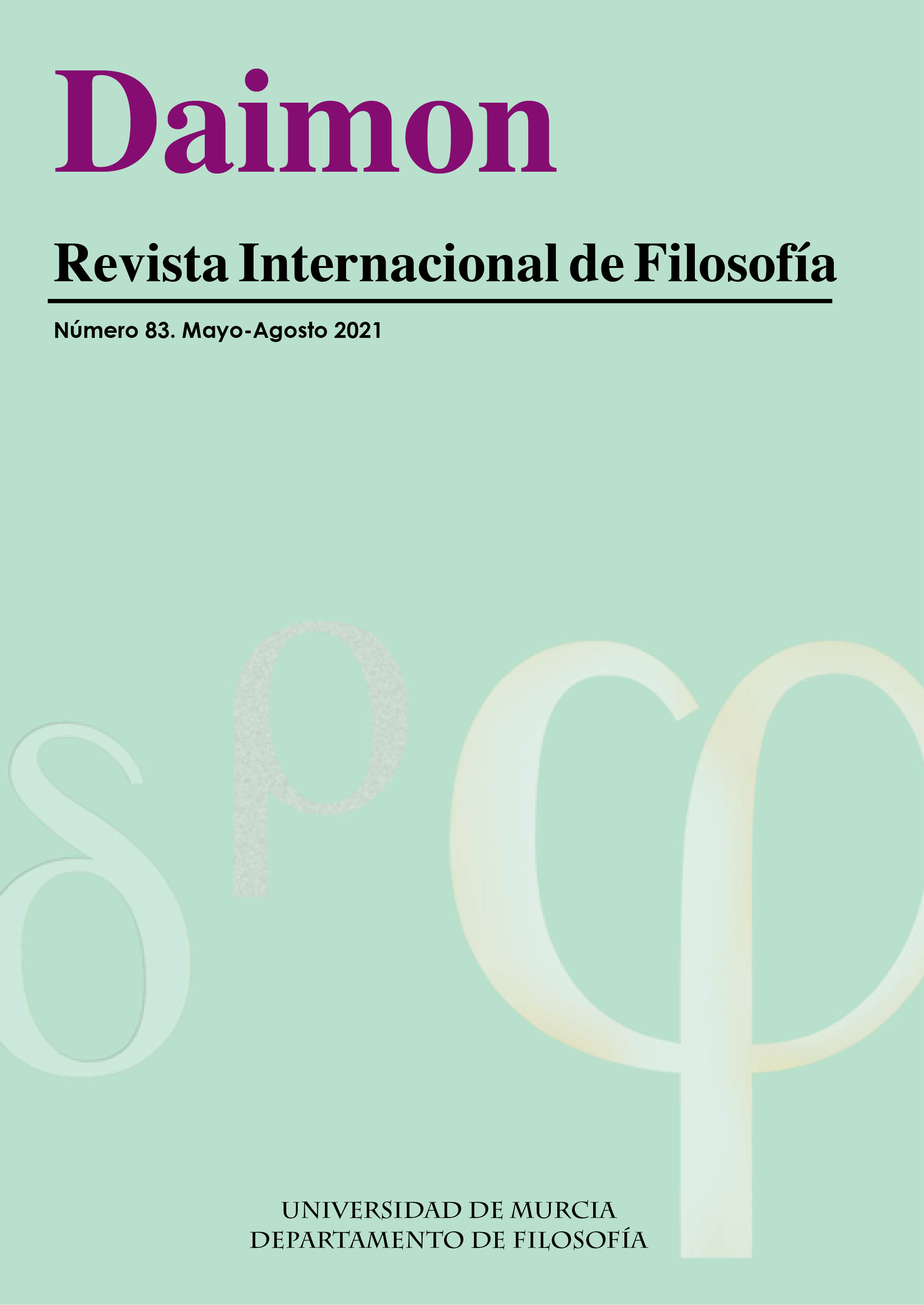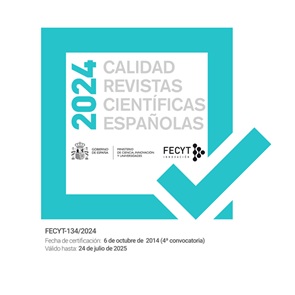Géneros naturales y definición de vida
Una crítica a la perspectiva metafísica de lo vivo
Resumen
En el debate sobre la definición de vida algunos autores consideran que vida ha de entenderse como un género natural (Cleland y Chyba 2002, Diéguez 2013). Sin embargo, cuando se afirma que vida es un género natural se asumen también otras ideas vinculadas con la idea de género natural que conviene explicitar, tal y como han mostrado recientemente Bich y Green (2018) aunque de manera programática, y ese es precisamente el objetivo planteado aquí; mostrar cuáles son esas implicaciones y señalar las dificultades que surgen al adoptar el discurso sobre los géneros naturales para entender y analizar categorías científicas complejas como, por ejemplo, vida. En este trabajo extendemos esta crítica a las distintas formas de entender los géneros naturales y señalamos cuál es la principal causa de las dificultades que derivan de este planteamiento.
Descargas
-
Resumen1777
-
PDF2389
-
HTML544
Citas
Benner, S.A. Ricardo, A. Carrigan, M.A. (2004), «Is there a common chemical model for life in the universe?» Current opinion in chemical biology 8(6), pp. 672-689
Bich, L., Green S. (2018), «Is Defining Life Pointless? Operational Definitions at the Frontiers of Biology», Synthese, 195(9), pp. 3919–3946.
Borghini, A., Casetta, E. (2012), «Quel che resta dei generi naturali», Rivista di estética, 49, pp. 247-273.
Boyd, R. (1988). «How to be a moral realist», en: G. Sayre-McCord (Ed.), Essays on Moral Realism. Cornell University Press, pp. 181-228.
Boyd, R. (1991), «Realism, anti-realism and the enthusiasm for natural kinds», Philosophical Studies, 61(1), pp. 127–148.
Boyd, R. (1999), «Homeostasis, species, and higher taxa», en: R.Wilson (Ed.), Species: New interdisciplinary essays (pp. 141–185). Cambridge: MIT Press.
Brigandt, I. (2003), «Species Pluralism Does Not Imply Species Eliminitivism», Philosophy of Science 70 (Proceedings): pp. 1305–1316.
Brigandt I. (2011), «Natural kinds and concepts: A pragmatist and methodologically naturalistic account», en: J. Knowles & H. Rydenfelt (Eds.), Pragmatism, science and naturalism (pp. 171–196). Berlin: Peter Lang Publishing.
Cleland C.E., Chyba C.F. (2002), «Defining ‘life’», Origins of Life and Evolution of the biosphere 32(4), pp. 387–393.
Cleland, C. E. (2012; 2011), «Life without definitions», Synthese, 185(1), 125-144.
Cleland C.E., Copley S.D. (2005), «The possibility of alternative microbial life on Earth», International Journal of Astrobiology 4(3-4), pp. 166-173
Craver, C. F. (2009), «Mechanisms and natural kinds», Philosophical Psychology, 22 (5), pp. 575–594.
Devitt, M. (2010), «Species Have (Partly) Intrinsic Essences», Philosophy of Science 77, pp. 648-661.
Diéguez, A. (2007), «La relatividad conceptual y el problema de la verdad: Bases para un realismo ontológico moderado» Contrastes. Revista Internacional de Filosofía 12, pp. 71-91.
Diéguez, A. (2008), «¿Es la vida un género natural? Dificultades para lograr una definicion del concepto de vida», ArtefaCToS 1, pp. 81-100.
Diéguez, A. (2013), «Life as a homeostatic property cluster», Biological Theory, 7(2), pp. 180-186.
Dupré, J. (1981), «Natural kinds and biological taxa», Philosophical Review 90, pp. 66-90.
Dupré, J. (1993), Disorders of things: Metaphysical foundations of the disunity of science, Cambridge, MA: Harvard University.
Dupré, J. (1999), «Are whales fish», en: D. Medin, & S. Atran (Eds.), Folkbiology (pp. 461-476) MIT Press
Ellis, B. (2001), Scientific Essentialism Cambridge University Press.
Ereshefsky, M. (1992), «Eliminative pluralism». Philosophy of Science, 59(4), pp. 671–690.
Ereshefsky, M. (2010), «What's wrong with the new biological essentialism», Philosophy of Science, 77(5), pp. 674-685.
Ferreira, M., Umerez, J. (2018), «Dealing with the changeable and blurry edges of living things: a modified version of property-cluster kinds», European Journal for Philosophy of Science 8, pp. 493–518.
Ghiselin, M. T. (1974), «A radical solution to the species problem», Systematic Biology, 23(4), pp. 536–544.
Griffiths PE. (2004), «Emotions as Natural and Normative Kinds Philosophy of science» 71, pp. 901-911.
Hacking, I. (2007), «Natural Kinds: Rosy Dawn, Scholastic Twilight», Royal Institute of Philosophy Supplements 61, pp. 203-239.
Hermida, M. (2016), «Life on earth is an individual», Theory in Biosciences, 135(1), pp. 37-44.
Hull, D. L. (1976), «Are species really individuals?», Systematic Biology, 25(2), pp. 174–191.
Keller, E. F. (2002), Making sense of life: Explaining biological development with models, metaphors, and machines. Cambridge, Mass: Harvard University Press.
Khalidi, M. (2013), Natural Categories and Human Kinds. Classification in the Natural and Social Sciences. Cambridge: Cambridge University Press.
Lange, M. (1996), «Life, "artificial life," and scientific explanation». Philosophy of Science, 63(2), pp. 225-244.
Luisi, PL. (1998), «About various definitions of life» Origins of Life and Evolution of the Biosphere, 28, pp. 613-622
Luisi, PL. (2006), «The Emergence of Life. From Chemical Origins to Synthetic Biology». Cambridge: Cambridge University Press.
Machery E. (2012), «Why I Stopped Worrying about the Definition of Life... and Why You Should as Well», Synthese 185(1), pp. 145–164
Magnus, PD. (2012), Scientific Enquiry and Natural Kinds. From Planets to Mallards, Palgrave-Macmillan, Springer.
Mariscal, C., Doolittle, W. F. (2018), «Life and life only: a radical alternative to life definitionism», Synthese, pp. 1-15.
Maturana Romesín, H., & Varela, F. J. (2008), De máquinas y seres vivos: Autopoiesis : La organización de lo vivo (7ª ed.). Santiago de Chile: Editorial Universitaria.
Moreno, A. & Fernández. J. (1997), «Definición de vida y universalización de la biología ». Arbor, 621, pp. 101-112.
Okasha, S. (2002), «Darwinian metaphysics: Species and the question of essentialism» Synthese, 131 (2), pp. 191-213.
Pace, N. R. (2001), «The universal nature of biochemistry», Proceedings of the National Academy of Sciences of the United States of America, 98(3), 805-808. doi:10.1073/pnas.98.3.805
Popa, R. (2004), Between Necessity and Probability: Searching for the Definition and Origin of Life. Heidelberg: Springer.
Putnam, H. (1988), Razón, verdad e historia. Madrid: Madrid: Tecnos.
Putnam, H. (1999), The Threefold Cord , New York, Columbia University Press.
Reydon, T. A. (2009), «Species and kinds: a critique of Rieppel’s “one of a kind” account of species», Cladistics.
Ruiz-Mirazo, K., Peretó J., Moreno A., (2004), «A universal definition of life: autonomy and open-ended evolution», Origins of Life and Evolution of the biosphere 34 (3), pp. 323–346.
Slater, M. (2014), «Natural Kindness», The British Journal for the Philosophy of Science 66, pp. 375–411
Smith, K.C. (2016), «Life is hard: countering definitional pessimism concerning the definition of life», International Journal of Astrobiology 15, pp. 277-289
Tirard, S., Morange, M., Lazcano, A. (2010), «The Definition of Life: A brief History of an Elusive Scientific Endeavor», Special Collection of Essays: What is Life? Astrobiology, 10(10), pp. 1003-1009.
Tuomela, R. (1985), Science, Action, and Reality, Dordrecht: Reidel.
Las obras que se publican en esta revista están sujetas a los siguientes términos:
1. El Servicio de Publicaciones de la Universidad de Murcia (la editorial) conserva los derechos patrimoniales (copyright) de las obras publicadas, y favorece y permite la reutilización de las mismas bajo la licencia de uso indicada en el punto 2.
2. Las obras se publican en la edición electrónica de la revista bajo una licencia Creative Commons Reconocimiento-NoComercial-SinObraDerivada 3.0 España (texto legal). Se pueden copiar, usar, difundir, transmitir y exponer públicamente, siempre que: i) se cite la autoría y la fuente original de su publicación (revista, editorial y URL de la obra); ii) no se usen para fines comerciales; iii) si remezcla, transforma o crea a partir del material, no podrá distribuir el material modificado.
3. Condiciones de auto-archivo. Se permite y se anima a los autores a difundir electrónicamente las versiones pre-print (versión antes de ser evaluada) y/o post-print (versión evaluada y aceptada para su publicación) de sus obras antes de su publicación, ya que favorece su circulación y difusión más temprana y con ello un posible aumento en su citación y alcance entre la comunidad académica. Color RoMEO: verde.











